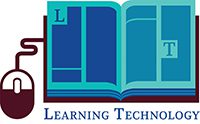 For every tech gadget that saves time, money and eases stress, there are always a few more that seemingly do exactly the opposite. You know the ones we mean. You may be glaring at one right now.
For every tech gadget that saves time, money and eases stress, there are always a few more that seemingly do exactly the opposite. You know the ones we mean. You may be glaring at one right now.
Still, it’s tough to be a technophobe these days. Technology is absolutely everywhere, and like it or not, a great deal of the innovations that have evolved in the past few years are quite useful — for everyone.
Learning leaders are no exception. Tried and true development methods like classroom instruction will never die, but for every class, there’s an e-learning or virtual course waiting in the wings. Of course, Tena Lyons, vice president for product marketing at SumTotal, works for a learning technology company, so she’d obviously have some pros to offer. But Lyons spoke with Chief Learning Officer about technology’s impact on modern learning leaders and the employees they serve, and we have to admit she makes some good points.
How important is technology for today’s learning leaders?
 Technology is an absolutely critical component to make it possible for learning leaders to equip the workforce to achieve more. Those who aren’t embracing the ways technology can enable more effective development programs are going to be left behind. Learning leaders are no exception; like every other employee, manager and leader, they’re overwhelmed. Change is constant today, and keeping pace with fast-moving business demands takes deliberate effort — this often impedes our best intentions to think forward, work strategically or adopt new practices.
Technology is an absolutely critical component to make it possible for learning leaders to equip the workforce to achieve more. Those who aren’t embracing the ways technology can enable more effective development programs are going to be left behind. Learning leaders are no exception; like every other employee, manager and leader, they’re overwhelmed. Change is constant today, and keeping pace with fast-moving business demands takes deliberate effort — this often impedes our best intentions to think forward, work strategically or adopt new practices.
Technology eases this burden for learning leaders. Today’s solutions know, empower and engage people to strengthen learning leaders’ programs and efforts by delivering a consumer-like experience, serving personal recommendations throughout work and creating tailored development plans that remove the guesswork. Technology holds the power to scale a learning leader’s strategic development initiatives across the organization in a way they wouldn’t typically have the capacity to do. We also know that there needs to be a shift away from learning as an event-driven activity, and today’s technology holds to the key to making continuous learning an essential part of each employee’s day.
How important is it for vendors to listen to customers? What happens when they do/don’t?
Surely, this is a trick question. It is absolutely critical and mutually beneficial for vendors and customers to develop an ongoing partnership — beyond sale and implementation. As a vendor, we can’t afford to guess what our customers need. But vendors today need to take it a step beyond just listening to their customers because there is a fine balance when gathering and prioritizing customer voice; we need to actually understand our customer’s business, challenges and demands. Only through those continual, relationship-building conversations do we begin to create technology that truly solves problems and delivers value.
How would you advise customers/clients to work with their vendors? Rather, what’s the most important factor to having a successful vendor-client relationship?
Speak up, get involved and network. Many of our most vocal customers are also the ones doing some of the coolest, most innovative things to elevate learning and development programs in their organizations. These customers have found ways to participate in vendor-led programs, like usability testing or advisory groups, connect with their peers and lead dialogue with their account managers to ensure the technology they’ve invested in is being leveraged and developed to support and drive their strategic programs. From the vendor perspective, this keeps our pulse on the voice of what the customer truly needs to move ahead in their business. By supporting and facilitating networking opportunities, user groups, executive boards and usability testing we actively incorporate customer voice.
What’s behind product updates? For instance, you recently updated the SumTotal Talent Expansion Suite. Why?
The industry itself is going through an evolution, and we recognize our customer’s needs continue to change rapidly. Today, we have an increasingly diverse workforce that is shaping new expectations for how we work. Employees no longer leave their consumer tendencies at the door; they expect the familiarity of their favorite personal applications in the business technology they use. Or, they simply won’t adopt the programs and tools you make available. We saw this evolution present a tremendous opportunity for innovation — the chance to deliver a consumer-grade solution built on a design-driven approach that creates an immersive, unified development experience. We set out to deliver technology that would engage employees in new ways by harnessing personalization and simplicity. We wanted to blur the lines between learning and talent, and empower people to simply focus on growth and career progression, not which system they need to log into.
What are some of the tech features learning leaders should expect from today’s technology suites?
Personalization is the key to making a solution an essential part of people’s day, and removing that burden from learning leaders without sacrificing program quality or employee engagement. Users should be able to configure and easily adjust how they interact with the solution according to the insight, tasks and priorities that are most important to them at any given time — pulling from a library of learning, development, team and performance widgets to create an actionable, role-based view of their development initiatives. Additionally, personalization should drive the proactive delivery of learning recommendations across the suite to keep users engaged and continuously learning, even when they aren’t making a deliberate effort. An intelligent learning recommendation engine can consider people’s job aspirations, preferences and peer consumption then serve targeted recommendations that will support ongoing career progression and professional improvement — throughout the suite when it matters most.
We’re also equipping people with a unified and personal approach to development, one that balances company and personal development needs in one place, and empowers employees to build a plan that helps them perform better today without sacrificing preparations for tomorrow. This unified approach to development seamlessly connects skills and competencies to goals, learning and content to remove the guesswork from development; each employee has the tools to identify and pursue an individualized path for development and career mobility that works within a framework that delivers value to the organization.
Additionally, the experience has to be simple with intuitive usability that puts critical information and activities only a click away from anywhere in the suite. We’ve taken this concept further by delivering consumer-driven features like enterprise search which brings together people, actions, learning — and even Skillsoft content — from across the Talent Expansion Suite into one results window.
Kellye Whitney is associate editorial director for Chief Learning Officer. To comment, email editor@CLOmedia.com.















